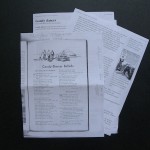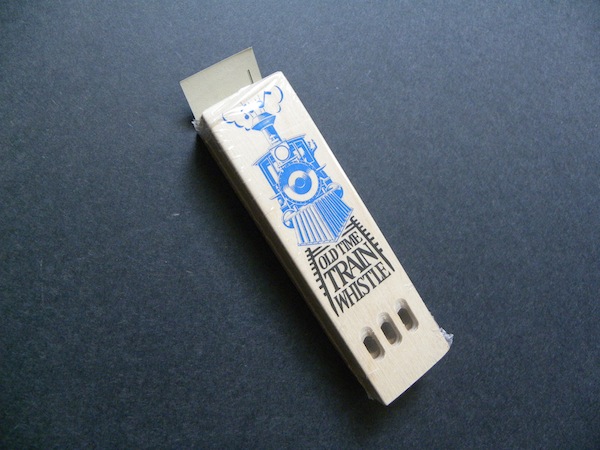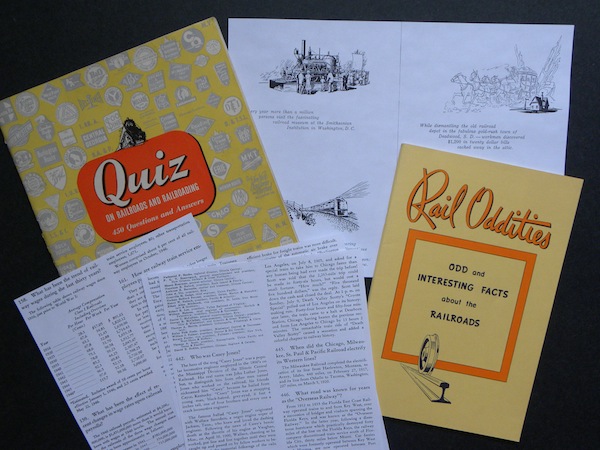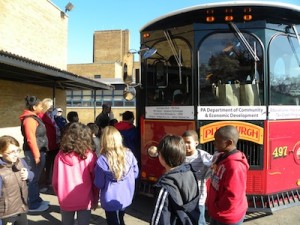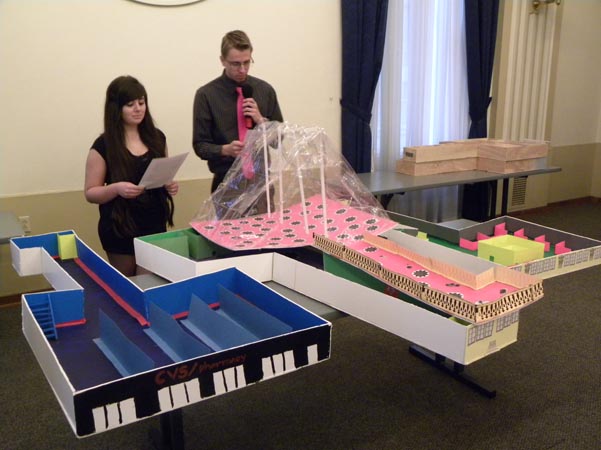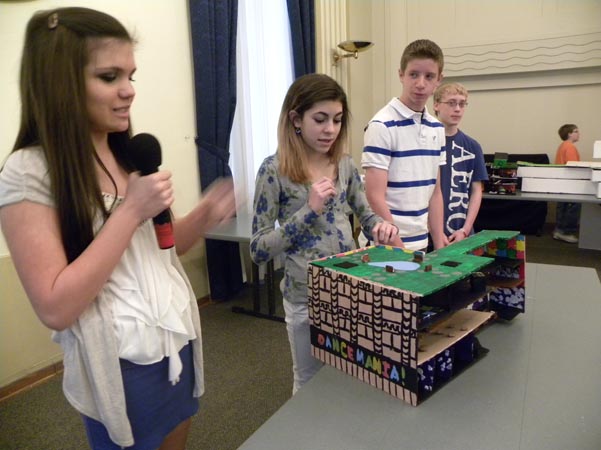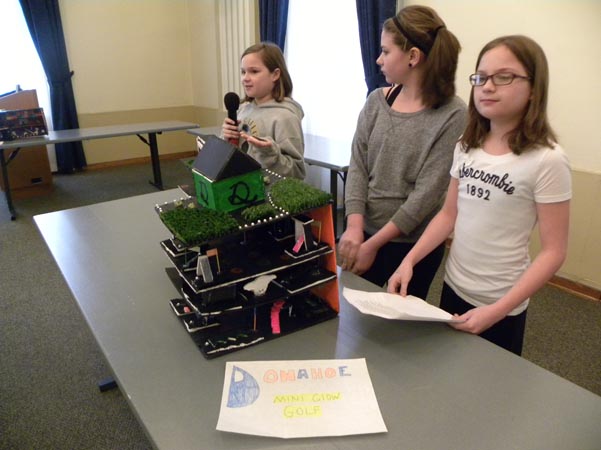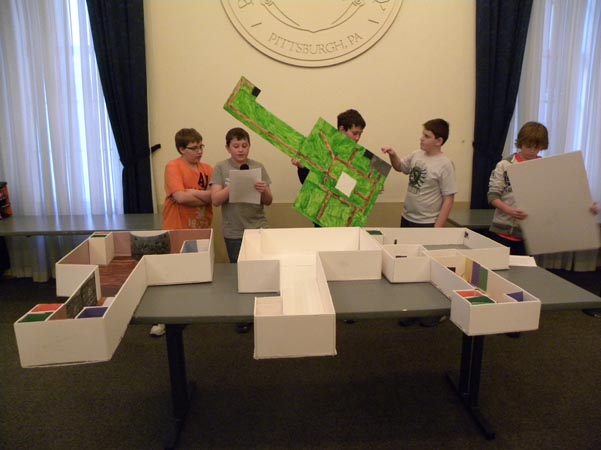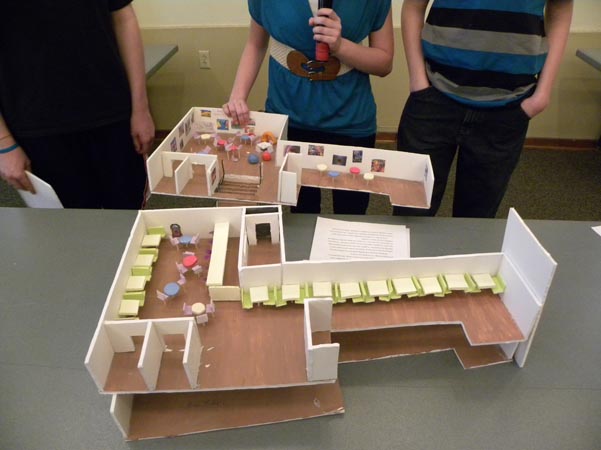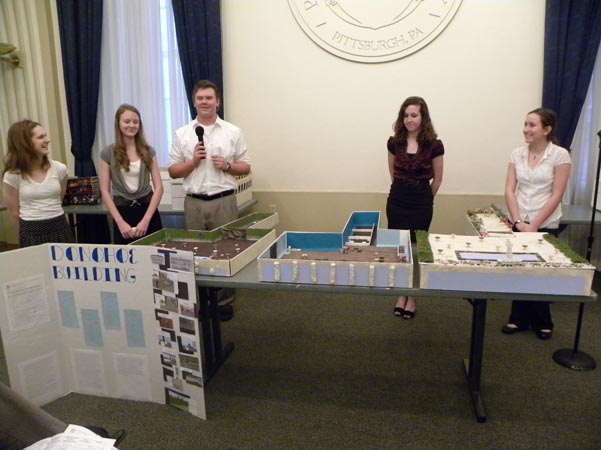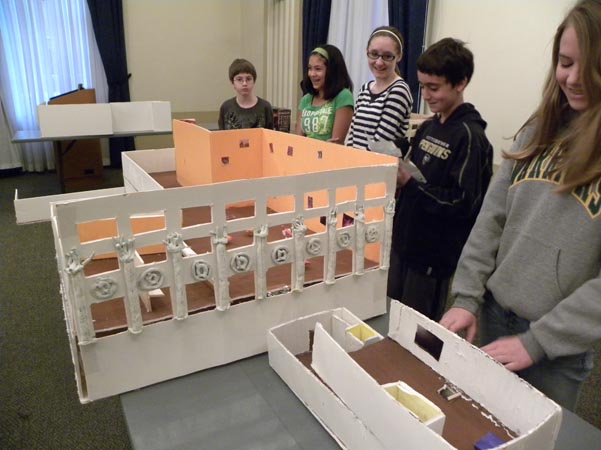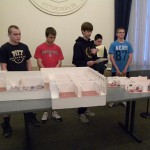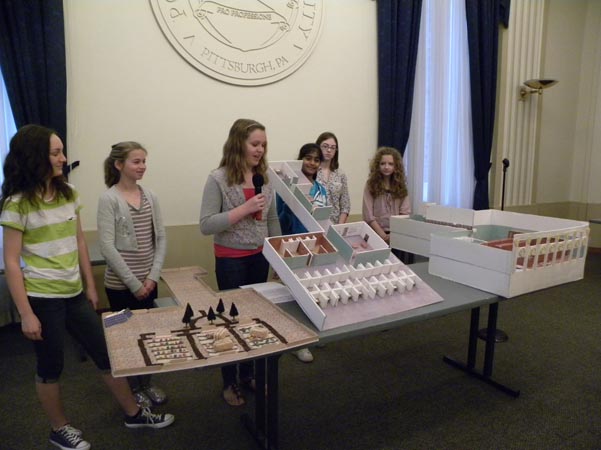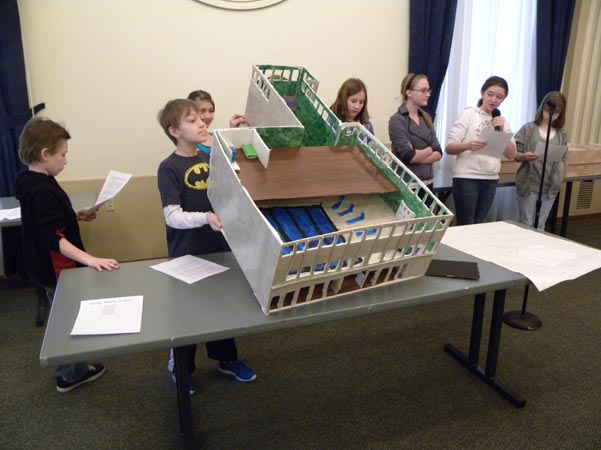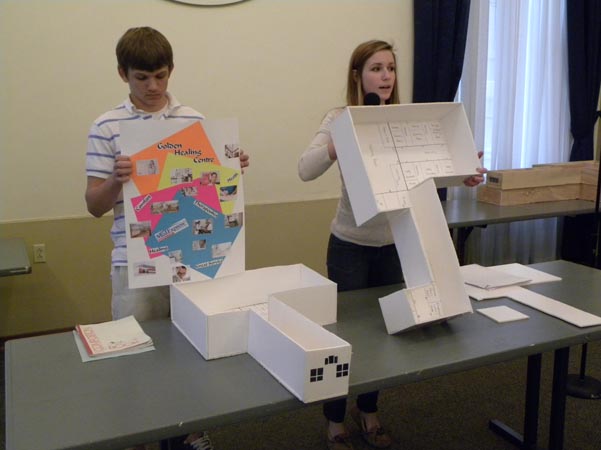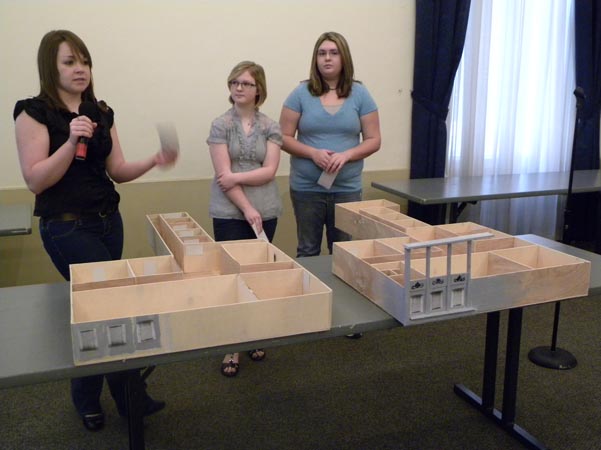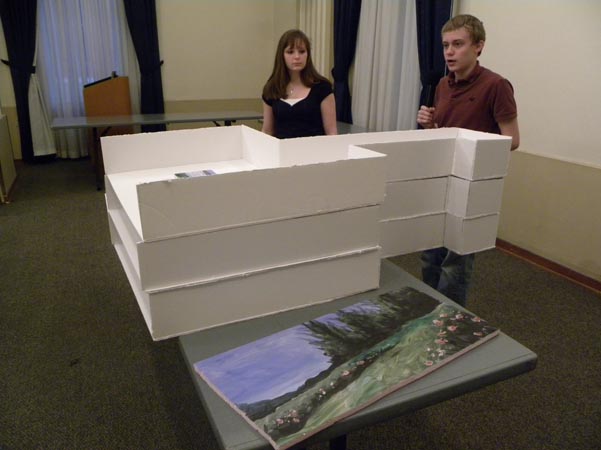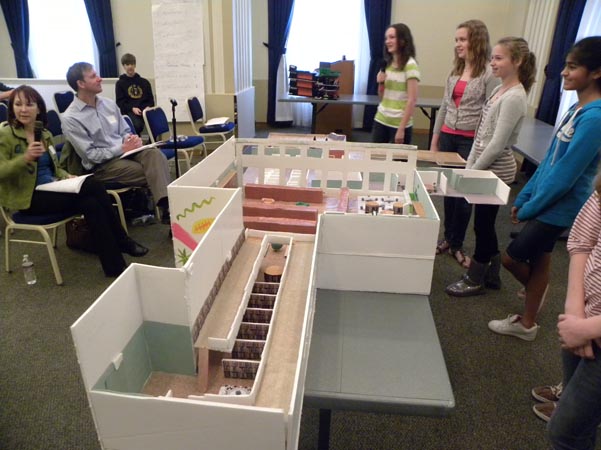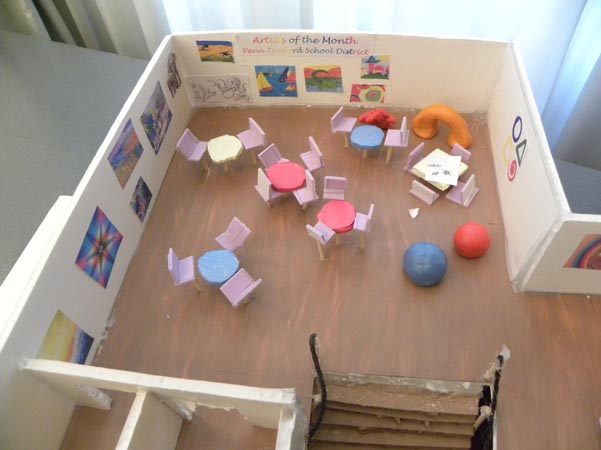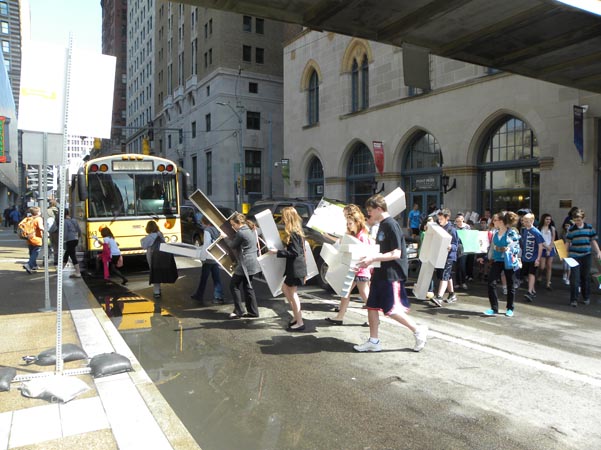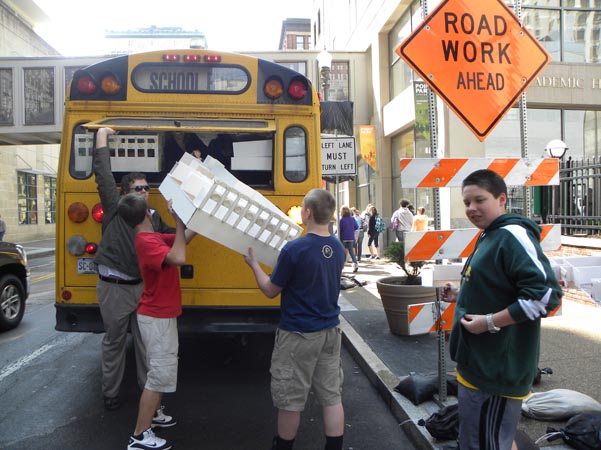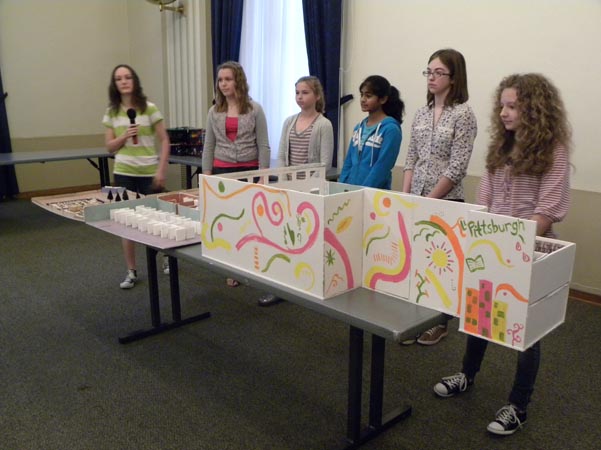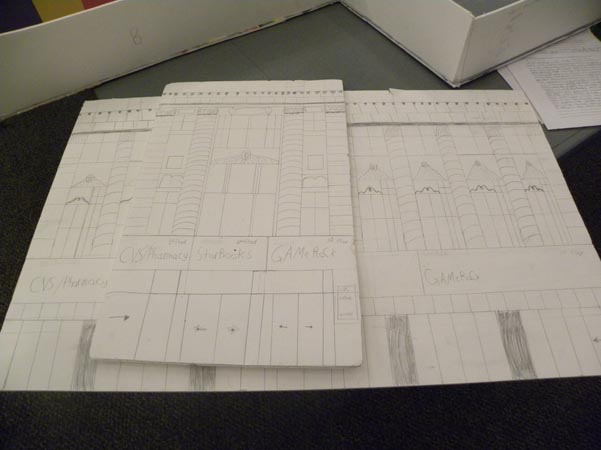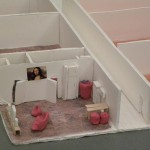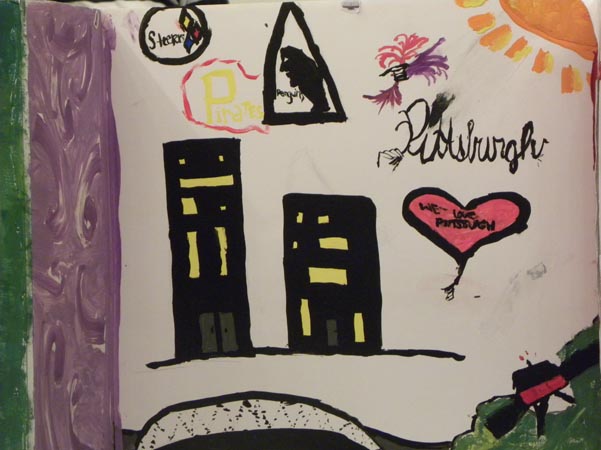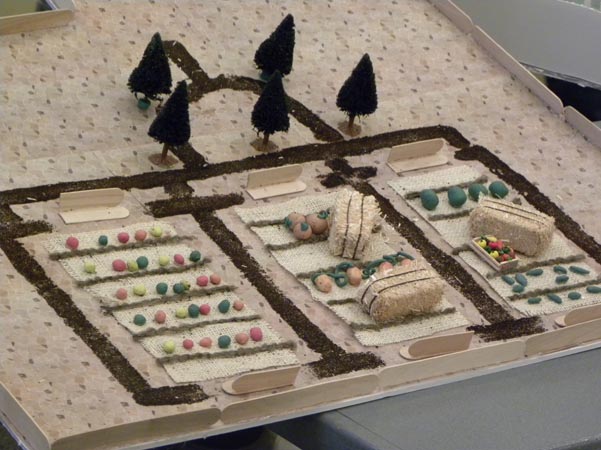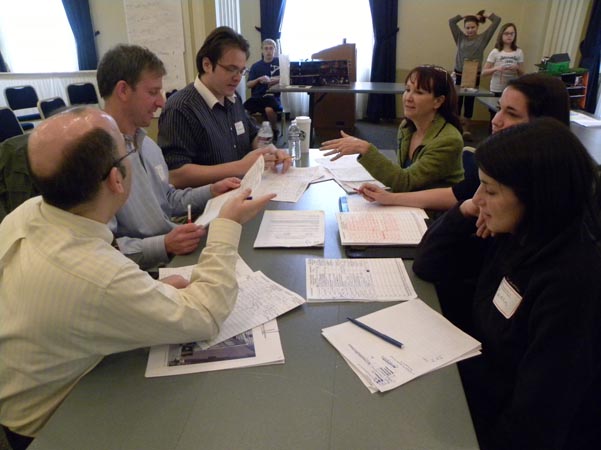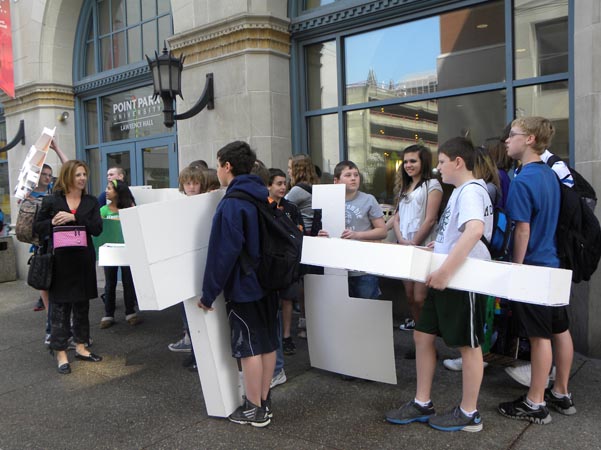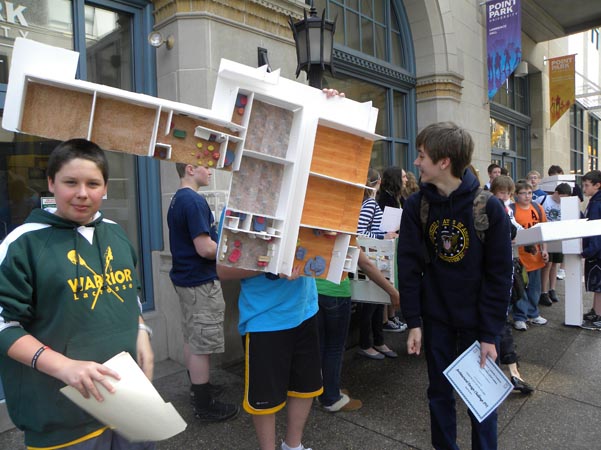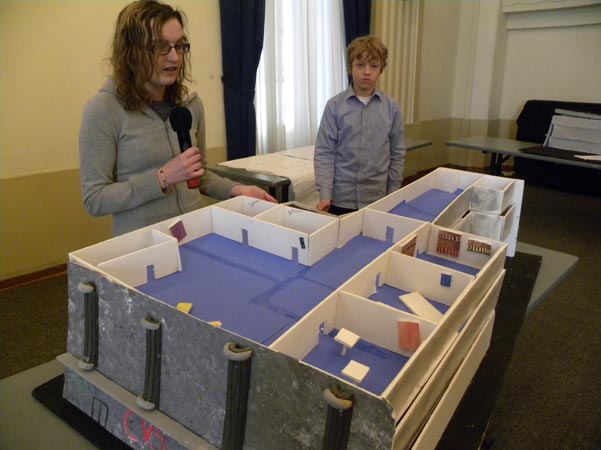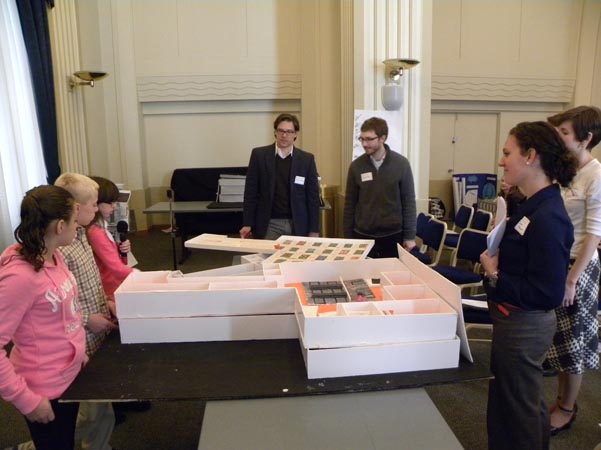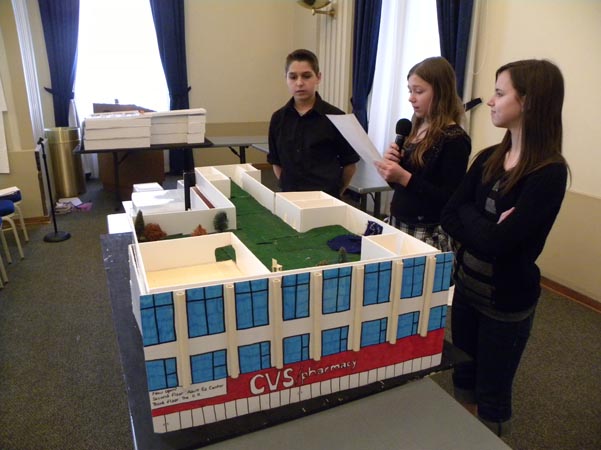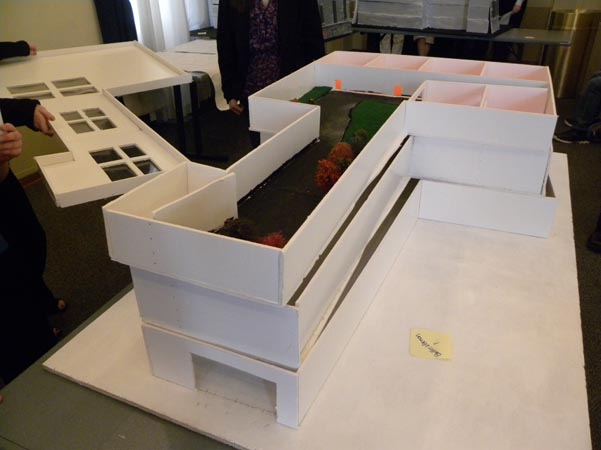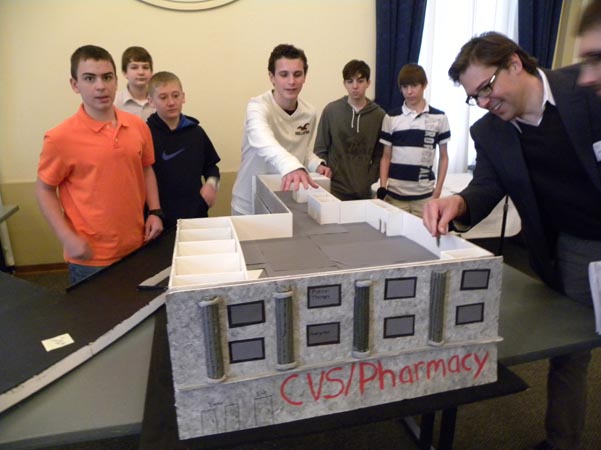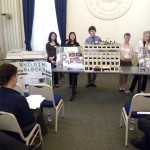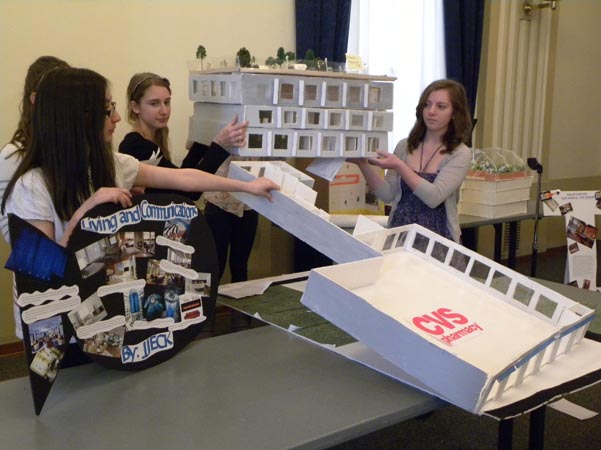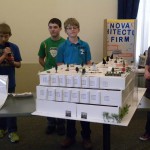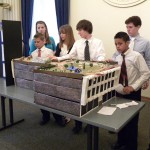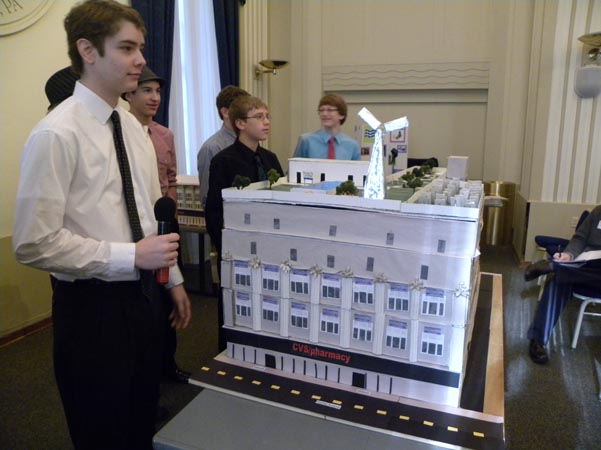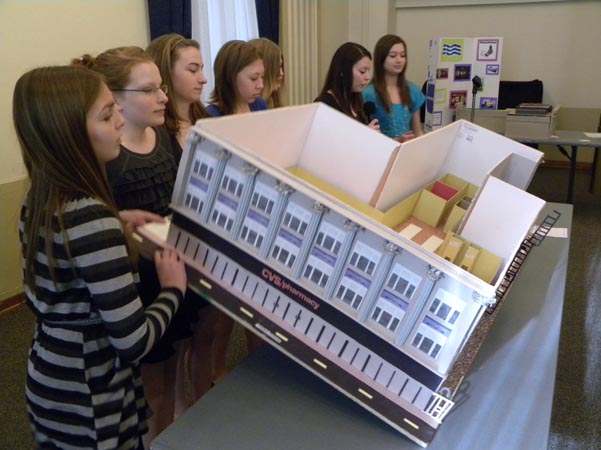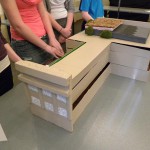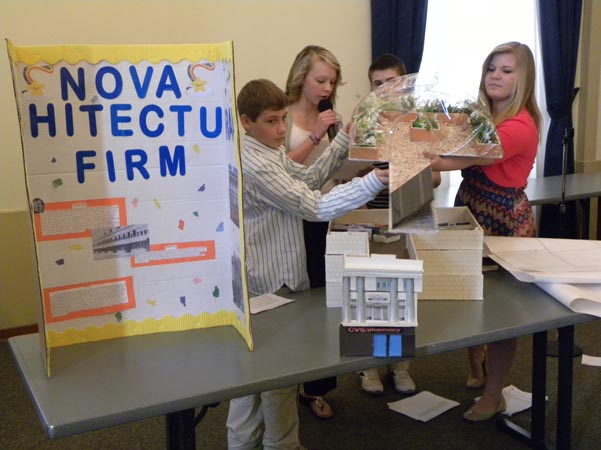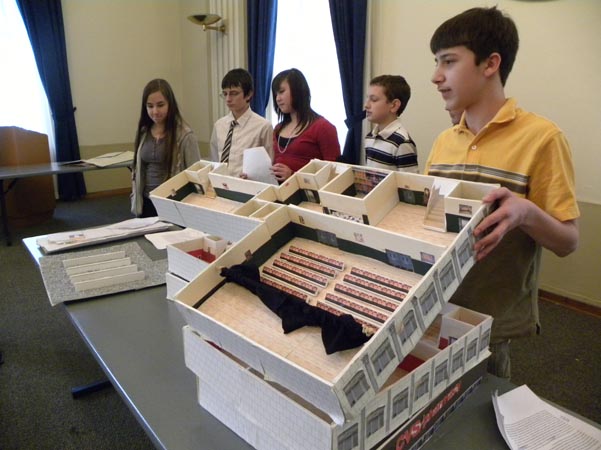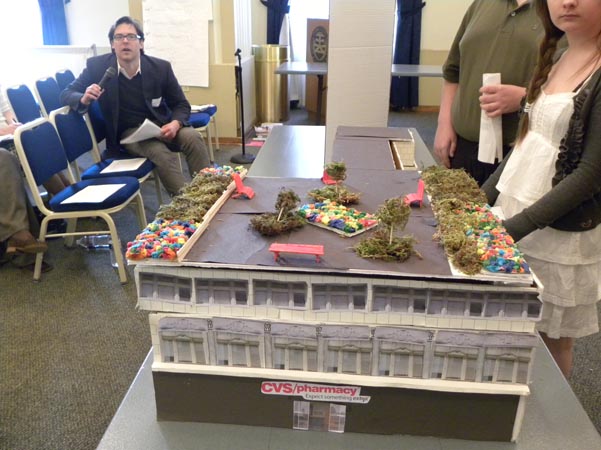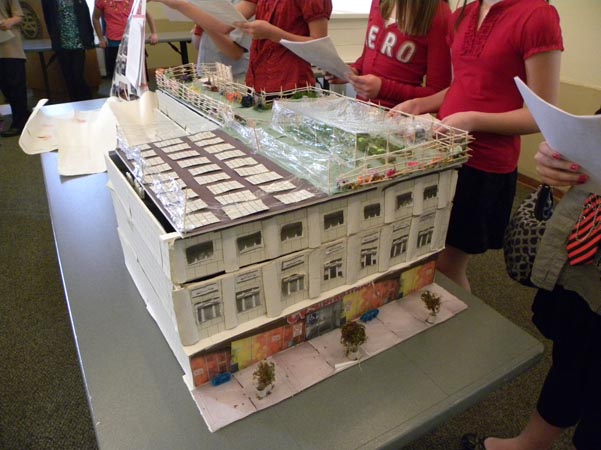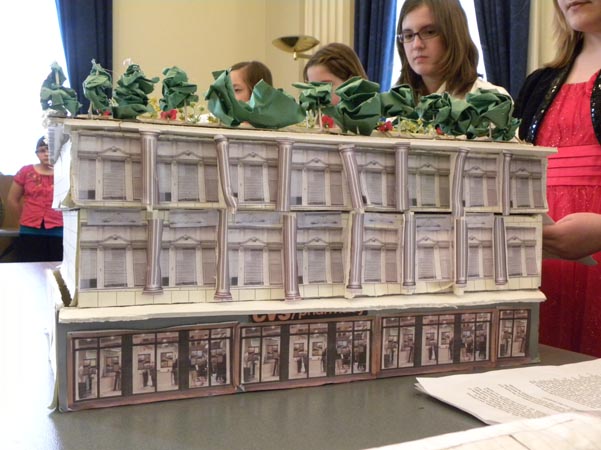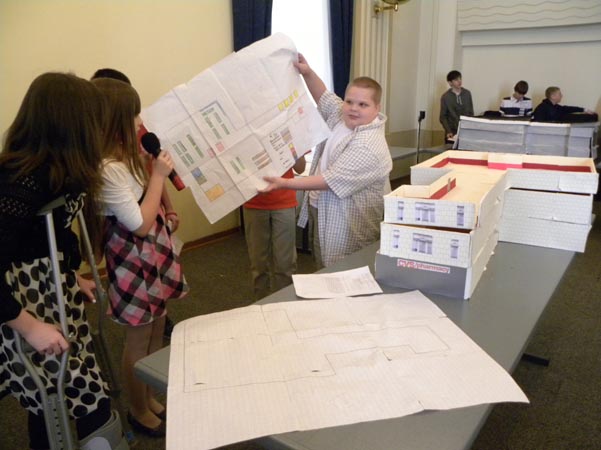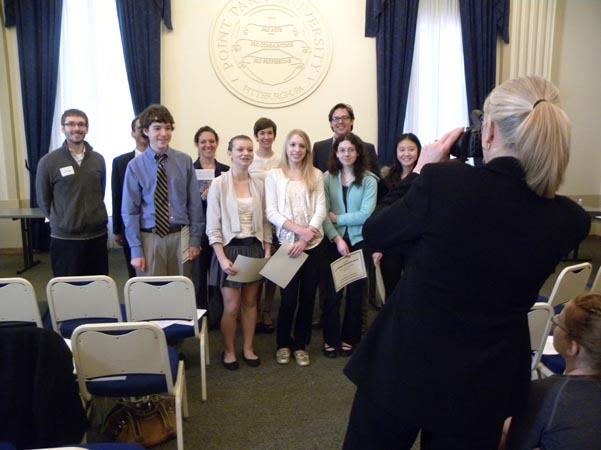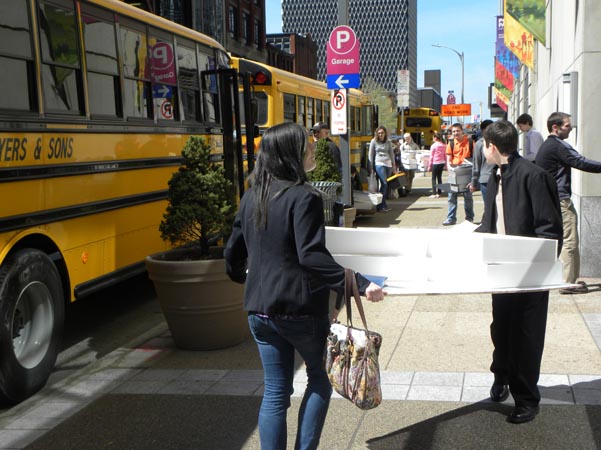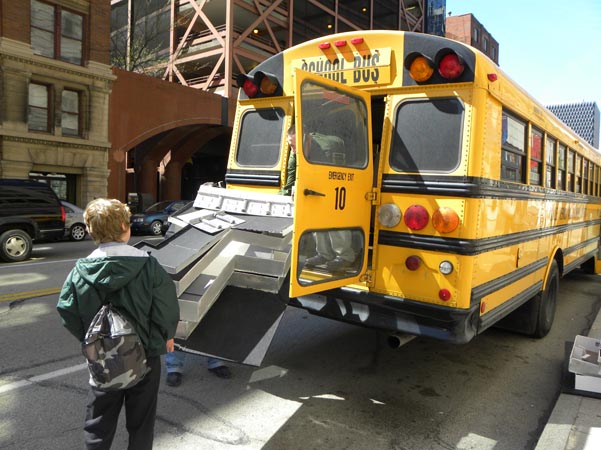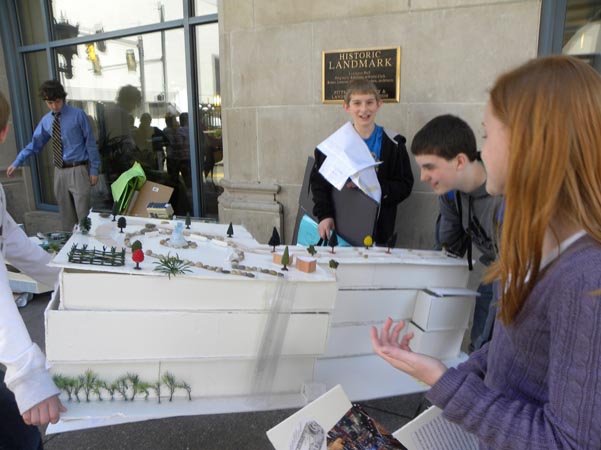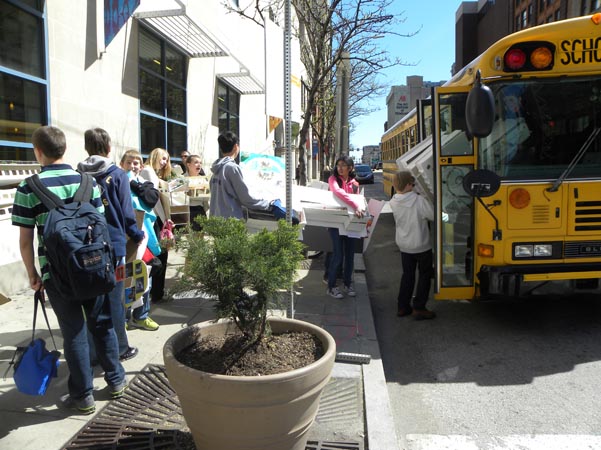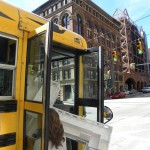
Category Archive: PHLF News
-
Three More Join PHLF’s Community of Scholarship Winners
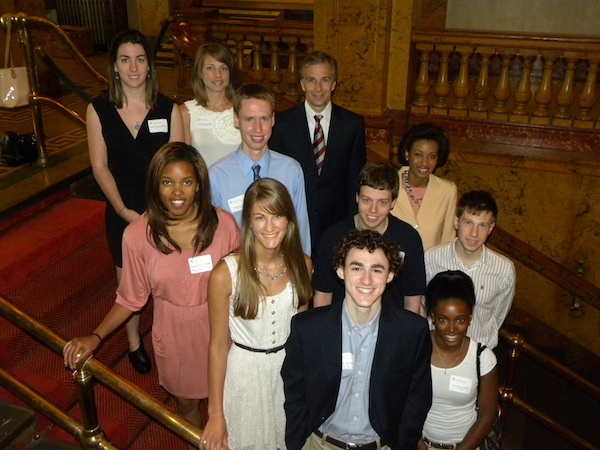 During a luncheon on June 25, David Brashear, chair of PHLF’s Scholarship Committee, awarded scholarships to three high-achieving college-bound students who care deeply about the Pittsburgh region. (Each scholarship has a maximum value of $4,000 and is for tuition and book expenses.) This year’s winners are:
During a luncheon on June 25, David Brashear, chair of PHLF’s Scholarship Committee, awarded scholarships to three high-achieving college-bound students who care deeply about the Pittsburgh region. (Each scholarship has a maximum value of $4,000 and is for tuition and book expenses.) This year’s winners are:- Jacqueline Clark (Pittsburgh Barack Obama High School), who will be attending Howard University (human development);
- Marissa Getty (Gateway High School), who will be attending Penn State University (architecture); and
- Kevin Skolnick (Mt. Lebanon High School), who will be attending Princeton University (chemical engineering).
Since 1999, PHLF has awarded 48 scholarships to a remarkable group of young people who we hope will be among the next generation of leaders to help us carry out our mission. Our scholarship recipients include people who are now architects and urban planners, engineers, biologists, and public health specialists. Several live in Pittsburgh and almost all stay in touch with PHLF through e-mail communication.
After making a special trip to attend the Pittsburgh luncheon, Emily Sullivan, who works as an architect in Ithaca, NY, sent the following e-mail to David Brashear: “It’s been awhile, but I feel my Pittsburgh roots taking hold. Like you, I always enjoy coming home––and I realize that PHLF is part of my Pittsburgh family. It’s wonderful to have such a great group of folks who have been a part of my life for 14(!) years and with whom I share similar goals and interests.”
David replied: “I’ve lived in a lot of places, and there is definitely something special about Pittsburgh. I think we were all fortunate to have grown up in such a well-rounded and well-grounded community. I’m so happy that you feel like PHLF is part of your family––it is. And you have pursued a path that will allow you to make a difference in our built environment––and that’s really what PHLF is all about.”
For more information on PHLF’s Scholarship Program, click here.
-
Free Historic Religious Properties Workshop: September 21
Friday, September 21, 2012
9:00 a.m. to 2:00 p.m.
Calvary Episcopal Church, Shadyside
Free workshop for up to 3 members from any one historic religious property. The workshop is limited to 80 people.
Reservations MUST be received by September 5, 2012
Contact: Carole Malakoff, 412-321-3612 or 412-471-5808 or hrp@phlf.org
PHLF will be holding a Technical Assistance Workshop for guardians of historic religious properties on Friday, September 21, from 9:00 a.m. to 2:00 p.m., at Calvary Episcopal Church in Shadyside. Lunch will be provided.
This workshop will have a new “twist” from those in 2008 and 2010. It will be peer-generated: the focus will be on building a network of congregation members and religious leaders who are committed to restoring their historic religious structures and learning from each other as well as from experts in the construction field.
Participants will be able to ask questions and discuss ideas about selecting and working with a contractor, raising matching funds, and undertaking critical exterior work on their historic religious property.
In addition, PHLF staff will guide participants through the process of applying for an HRP matching grant. By the end of the workshop, participants who want to apply to PHLF for a matching grant or technical assistance in 2013 will have completed about 75% of their application. The application deadline for PHLF’s 2013 HRP program is November 30, 2012.
We encourage you to attend the workshop if:
- you are a religious leader or member of a congregation that needs matching funds to undertake an exterior project, roofing, gutter work, masonry repairs, or stained glass window restoration;
- you want to connect with others who have had experience with PHLF’s HRP program and have successfully undertaken critical building improvements;
- you want to know how to begin prioritizing your building needs and involving your congregation in raising funds to maintain and restore its place of worship.
Registration is free. Advance reservations are required and MUST be received by September 5. The workshop is limited to 80 people.
Please contact Carole Malakoff, HRP Coordinator, before September 5, to let her know how many people from your congregation will attend. (Up to 3 members from any one congregation can register.) Help us make this workshop a success by registering today!
-
Fairbanks Feature: A New Train of Thought––On the Lighter Side
James D. Van Trump Library | Frank B. Fairbanks Transportation Archive | Fairbanks Features
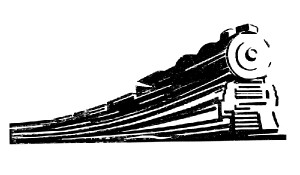 Showcasing a variety of materials located in the Frank B. Fairbanks Rail Transportation Archive
Showcasing a variety of materials located in the Frank B. Fairbanks Rail Transportation ArchiveNo. 14 Presentation
Fairbanks Feature: A New Train of Thought—On the Lighter Side
Most of the information in the Fairbanks Archive is in straight, printed text form. However, a small selection of material is presented in the form of questions and answers––or even poetry, song, and humor. In most cases, these presentations are not used by the serious researcher, but there is merit in perusing these forms, especially in recalling the days when railroads were one of the most important industries in our country.
The “quiz” booklets are full of information about the railroad industry at its peak. After seeing how valuable, efficient, and practical railroads were for people in their daily lives, one really wishes to bring back this wonderful era of transportation. Most of the booklets shown below were printed in the 1940s and early 1950s. Reading through the pages, nostalgia and respect for this time period comes through loud and clear.
For those who are interested in “looking back,” come to the Archive any Wednesday and enjoy the “lighter side” of our collection. Here are some of the items you’ll find.
- According to the Wikipedia, Gandy dancer is a slang term used for early railroad workers who laid and maintained railroad tracks in the years before the work was done by machines. The term also refers to the movements (the dance) by the workers as they used the heavy levers to keep the tracks aligned. The swinging movement was necessary as the men worked in concert at this hard, physical work. Tracks had to be constantly realigned due to the roadbed shifting.
- A fun (but authentic in sound) old-time train whistle.
- Two “serious” quiz booklets.
- The songs are great, but the jokes . . .
- These booklets will steep you in nostalgia for the recent past.
The Frank B. Fairbanks Rail Transportation Archive is open by appointment on Mondays, from 10:00 a.m. to 5:00 p.m. Use of the archive is free to PHLF members (one of the benefits!); non-members are assessed a $10 use fee.
The Archive is located on the fourth floor of The Landmarks Building at Station Square, in the offices of the Pittsburgh History & Landmarks Foundation.
To schedule an appointment, email the Librarian James Halttunen: James@phlf.org
-
Exploring the Old Allegheny County Jail Museum
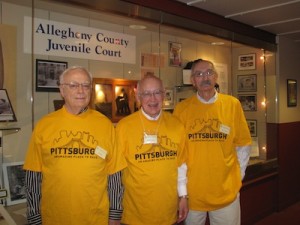 On April 20, three PHLF docents—Ed Horan, Bob Loos, and Al Stanish—opened the Old Allegheny County Jail Museum in the Family Law Center on Ross Street for teams from the Building Owners & Managers Association’s Mid-Atlantic Conference that were competing in Pittsburgh: An Amazing Place to Race!
On April 20, three PHLF docents—Ed Horan, Bob Loos, and Al Stanish—opened the Old Allegheny County Jail Museum in the Family Law Center on Ross Street for teams from the Building Owners & Managers Association’s Mid-Atlantic Conference that were competing in Pittsburgh: An Amazing Place to Race!Teams of four to five participants traveled through downtown Pittsburgh visiting 19 sites to learn about places such as the Union Trust Building, PPG Place, and the Family Law Center, now housed in what was Pittsburgh’s historic Allegheny County Jail. At the end of the day, volunteers joined the racers at the top of the U.S. Steel Tower for a magnificent view and refreshments.
Leading the Jail Museum Tours were:
Ed Horan, a retired downtown businessman, has been a docent with PHLF since 2007. In his printing business, Ed worked closely with PHLF, so becoming a volunteer docent was an easy segue for retirement activities. Ed’s primary focus for tours is the Jail Museum and Allegheny County Courthouse.
Bob Loos, a retired draftsman, is the lead docent at the Old Allegheny County Jail Museum and opens the museum for free public tours on Mondays, February through October, 11:30 a.m. to 1:00 p.m. Bob has been a docent with PHLF since 1996. Besides the Jail Museum, Bob leads PHLF tours for students and adults in the Pittsburgh region and presents illustrated lectures at conferences and social meetings.
Al Stanish, retired educator, recently became a PHLF docent. Al’s primary focus for tours is the Jail Museum and downtown Pittsburgh, for both student and adult groups.
-
Thank You Spring Interns
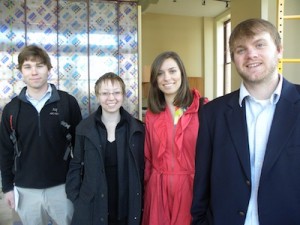 PHLF involved eight volunteer interns (high school, undergraduate, and graduate students) in its educational and historic preservation activities between January and April 2012. Students incorporated their interests in urban planning, interior design, history, architecture, business, writing, and photography to help advance PHLF’s mission.
PHLF involved eight volunteer interns (high school, undergraduate, and graduate students) in its educational and historic preservation activities between January and April 2012. Students incorporated their interests in urban planning, interior design, history, architecture, business, writing, and photography to help advance PHLF’s mission.Interns researched, archived, and entered data for the National Register Downtown Districts project; assisted in educational programs, tours, and workshops; and edited and proofread the annual issue of PHLF News (April 2012), the new membership brochure, and four poetry and art books by elementary school students, among many other activities.
We thank the following for volunteering their time and talent to PHLF:
- Colin Farr, University of Pittsburgh (Urban Studies)
- Alisa Griffin, West Virginia University (Interior Design)
- Shawn Kerr, University of Pittsburgh (History/Political Science)
- Emily Leftwich, University of Pittsburgh (Urban Studies)
- Maya McCray, Pittsburgh Obama High School
- John Moorhead, University of Pittsburgh (English Literature/History/Writing)
- Steve Salas, Point Park University graduate (Teaching Certificate)
- Abby Wolensky, University of Pittsburgh (Urban Studies)
As a result of their experiences with PHLF, volunteer interns add to their portfolios, gain a deeper appreciation for Pittsburgh’s history and architecture, and develop an awareness of the economic, social, and cultural benefits of historic preservation.
Intern comments on the value of their experiences with PHLF include the following:
- Colin Farr: “My time at PHLF has been some of the most rewarding months of my life. The staff at PHLF involves the interns in all facets of daily operations and does not hesitate to give us real responsibility. Whether it is an educational program with area students or a research project for PHLF, the intern gets hands-on experience that is invaluable to attaining a well-rounded education.”
- Alisa Griffin: “The best part of interning at PHLF was being around so many people who are passionate about what they do and about the City of Pittsburgh. I’ve learned so much about my new hometown, and I’ve made some wonderful connections. I couldn’t have had a more rewarding experience anywhere else.”
- Shawn Kerr: “Volunteering at PHLF has given me a new perspective on my hometown that I never had before. The tours open your eyes to so much that’s usually overlooked.”
- Emily Leftwich: “Interning at PHLF has helped to remind me to appreciate the details of the architecture of this city and has reinforced and built upon what I learned during a cultural resource management course at Pitt.”
- Maya McCray: “My experience with PHLF, through the Career Connections program at my high school, really expanded my knowledge of the variety of architecture in Pittsburgh. Little did I know that after a few months of working at PHLF I would realize how much I had overlooked during my 17 years here. I am very grateful to have had the opportunity of working with such bright and intelligent people who provided a positive environment to learn in.”
- John Moorhead: “It is inspirational and amazing to know how much historical appreciation is in this organization. It’s contagious. With every conversation and experience I learned something new, whether it was about my family heritage or the general history of Pittsburgh. PHLF has taught me to appreciate the less obvious and to fight for something you love.”
- Abby Wolensky: “Interning at PHLF has really helped me learn more about the city around me. I’m inspired by PHLF’s passion for the City of Pittsburgh. I look forward to helping with the Career Awareness programs again in the fall.”
-
PPS Third Graders Explore 6 Pittsburgh Sites
In April and May, third-graders from 12 Pittsburgh Public Schools are participating in PHLF’s “Building Pride/Building Character” tour aboard Molly’s Trolley, thanks to the Commonwealth of Pennsylvania’s Educational Improvement Tax Credit Program and generous contributions in support of that program from Huntington Bank, PNC Bank, BNY Mellon, ESB Bank, Allegheny Technologies, Frank B. Fuhrer Wholesale Company, Bridges & Company, UPMC, and Hefren-Tillotson.
PHLF thanks Pittsburgh City Council for always welcoming the students to the City-County Building and talking with them about their neighborhood. Students also explore the Allegheny County Courthouse, Fort Pitt Museum, and Fort Pitt Block House. They ride the Duquesne Incline up to Mt. Washington and walk to see the “Points of View” statue of George Washington and Guyasuta. All in all, it’s a great adventure!
“We are so appreciative of the generosity of your donors,” wrote one teacher. “Many of our students would never have such a wonderful opportunity without your donors. Others commented, “This program is amazing. Children who had seen some of the sites gained more knowledge. Students who hadn’t seen them had their world expanded through this experience.” “Great trip for adults and students. Great information. Knowledgeable guides. Grade appropriate.” “This is a fantastic trip and every school should go.”
For more information on PHLF’s EITC program, click here.
-
Students Participate in Architectural Design Challenge
PHLF hosted its 16th Annual Architectural Design Challenge with Westmoreland County middle and high school students on March 27 and 28, 2012 in downtown Pittsburgh at Point Park University.
Teams of students were challenged to create a model showing how both the Fifth and Forbes Avenue exteriors of the former Donahoe building could be restored and how the second and third floors could be adapted for new uses. (CVS Pharmacy is located on the first floor.) They were given the options of adding up to three stories on the roof of the existing building and were asked to envision a new use for the nearby “Skinny Building” (at Forbes and Wood) that would complement their program.
In creative, convincing models, students showed how a soda-shop, medical express center, or apartments, among many other ideas, could be created above the CVS pharmacy. Other teams suggested building programs for dance clubs, a video game center, a mini-glow golf course, and microbrewery and events center. Each group incorporated aspects of green-building design in their program and many models incorporated green roofs.
“We are so impressed with the creativity, poise, and teamwork demonstrated by the students,” said Louise Sturgess, executive director of PHLF. “Our staff and docents introduce the students to the design challenge during an orientation tour in the fall, and then the students spend five months brainstorming ideas, researching, developing plans, building their models, and preparing their oral presentations.
“We are always inspired by the students who become so invested in their work. Our design challenge gives them the chance to apply their knowledge and skills to a real-world problem: how do you find new uses for the upper stories of historic buildings in downtown Pittsburgh? What will bring people back to the urban center? Each team did an excellent job of analyzing and providing feasible, creative answers to these questions.”
“We thank the eleven judges who provided constructive comments to the student teams on March 27 and 28,” said Karen Cahall, PHLF’s education coordinator, “and we thank the Alfred M. Oppenheimer Memorial Fund of The Pittsburgh Foundation, The Fine Foundation, and the McSwigan Family Foundation for providing major support to PHLF, for educational programs such as our annual architectural design challenge.”
Click here for a list of participating teams and awards
-
PHLF Advocacy Updates
Historic Review Commission, Local Designations, and Other City Issues
April HRC Meeting. The next meeting of the HRC will be held on April 4, 2012 at 1:00 p.m. in the First Floor Hearing Room of 200 Ross Street.
Items of note on the Agenda include the proposed demolition of several non-contributing buildings in the Market Square Historic District for the construction of a mixed-use high rise by Millcraft Industries. In PHLF’s “Fifth and Forbes Development Plan” (1999), the non-contributing buildings on the south side of Forbes Avenue were identified as a prime site for new development.
National Register Nominations
On March 2, 2012, the National Parks Service designated the Braddock Carnegie Library as a National Historic Landmark. According to Walter Kidney in Pittsburgh’s Landmark Architecture (PHLF 1997), “[t]his was the first of the American Carnegie libraries to be dedicated, a few hundred yards from the Edgar Thomson Works, Andrew Carnegie’s first major venture in steelmaking.” The building was designed by William Halsey Wood (Newark, NJ) in 1888; Carnegie Hall was added in 1893 by Longfellow, Alden & Harlow (Pittsburgh, PA).
The National Historic Landmarks Program is a federal designation for nationally significant places that possess “exceptional value or quality in illustrating or interpreting the heritage of the United States.” There are less than 2,500 National Historic Landmarks in the nation. Allegheny County has 11 National Historic Landmarks––Allegheny County Courthouse and Jail (1888), Bost Building (1892), Braddock Carnegie Library (1888), Carrie Blast Furnaces Number 6 and 7 (1884), Chatham Village (1930s), Emmanuel Episcopal Church (1886), Forks of the Ohio, Kennywood Park (1898), Oakmont Country Club (1903), Smithfield Street Bridge (1883), and Woodville Plantation (c.1780).

